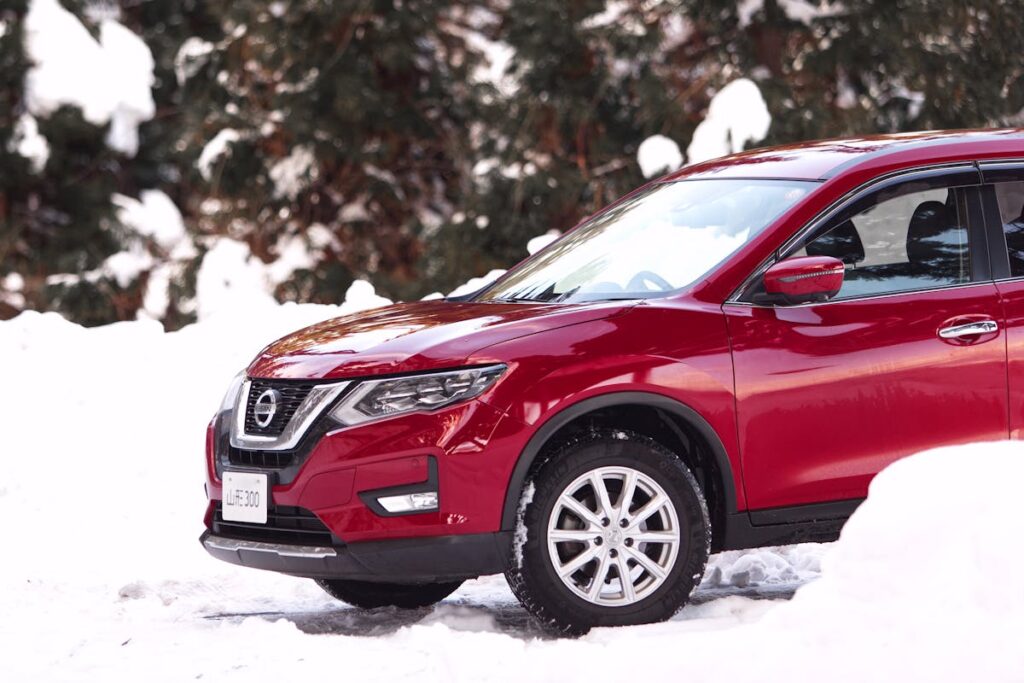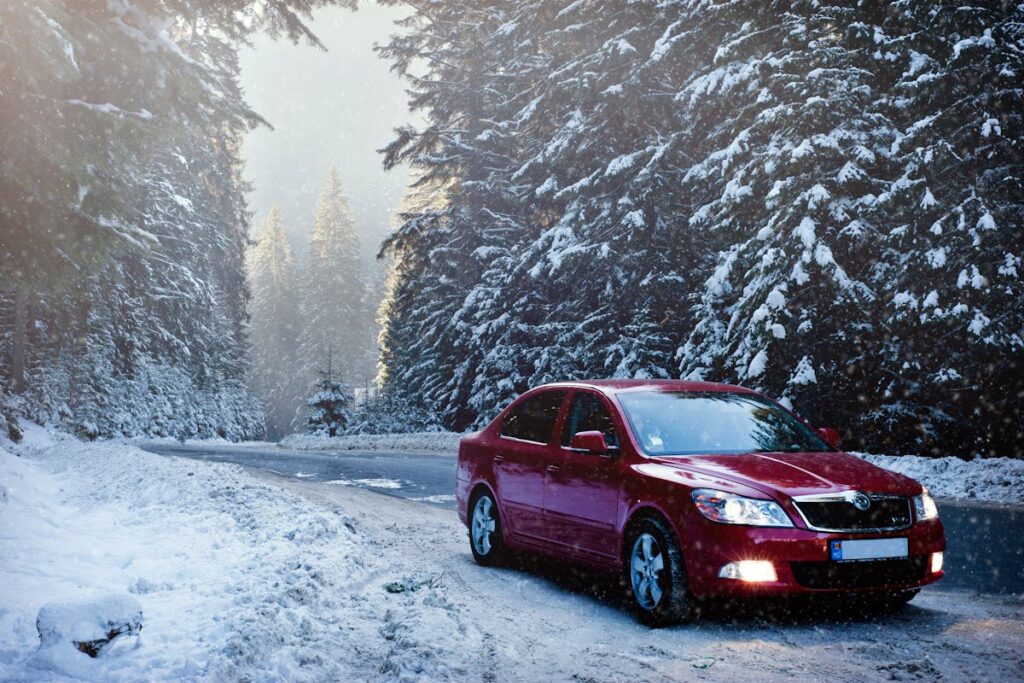Winter presents a unique set of challenges to even the most experienced drivers with its icy roads and reduced visibility. From understanding the perils of black ice to the importance of a well-maintained vehicle, there are critical factors every motorist should be aware of. Additionally, preparing for emergencies and investing in winter driving training can greatly enhance one’s safety. As we explore these five key aspects, you’ll gain essential knowledge that could quite possibly save your life in the chilly months ahead.
Understanding Winter Road Conditions
Maneuvering the treacherous maze of winter roads begins with understanding the road conditions. One must be aware of the effects of snowfall on road surfaces. Snow traction, or the grip a vehicle’s tires have on snowy or icy surfaces, greatly decreases, posing a considerable risk to drivers. It is not uncommon for vehicles to skid or slip, especially on icy surfaces. These conditions can be exacerbated by the fluctuating winter temperatures, causing a freeze-thaw cycle that leads to black ice, a transparent layer of ice that forms on the road, making it even more slippery. Understanding these conditions and their impact on driving performance is essential for safe winter driving. Remember, knowledge is the first step towards prevention.
Essential Winter Car Maintenance
To guarantee safe navigation through winter roads, regular and thorough car maintenance is essential. This includes, but is not limited to, frequent battery checks and monitoring tire pressure.
- Battery Checks: During winter, cold temperatures can reduce your car’s battery power considerably. It’s crucial to check the battery regularly, confirming it has sufficient charge to withstand the cold.
- Tire Pressure: Tire pressure tends to drop in colder temperatures. Keeping your tires properly inflated helps provide ideal traction on icy or snowy roads.
- Fluid Levels: Winter conditions require your vehicle to work harder, which can deplete fluids more quickly. Regularly checking and replenishing engine oil, coolant, and windshield wiper fluid is advisable.
These preventative measures will guarantee your vehicle is well-equipped for winter travel.

Tips for Safe Winter Driving
A myriad of challenges await drivers during the icy winter months. One of the most common issues is reduced visibility due to fog, snow, or sleet. To combat visibility issues, make certain your windshield wipers are in good condition, and use defrosting tools or de-icer to keep windows clear. Fog lights can also enhance visibility when necessary.
Tire performance is another critical concern in winter. The cold temperatures can affect tire pressure, leading to decreased traction. Always check your tires for proper inflation and consider investing in winter-specific tires for improved grip on icy roads. Regularly inspect the treads for wear and replace the tires if needed. By addressing visibility issues and optimizing tire performance, you can make certain a safer winter driving experience.
Handling Emergency Situations
Even though we endeavor to avoid them, emergency situations can arise while driving in winter. Quick response and effective preparedness are essential for safe vehicle recovery.
Preparing an emergency kit is important. This kit should include:
- Heat sources: Items like blankets and hand warmers can prevent hypothermia.
- Visibility tools: Flashlights, flares, and reflective triangles can signal help.
- Food and Water: Non-perishable snacks and water are necessary for sustenance in case of long waits.
Understanding how to use these items effectively can be a lifesaver. Additionally, learning basic vehicle recovery techniques, such as how to free a car stuck in snow, can help you manage emergencies effectively. Balancing between preparedness and knowledge is key in handling winter driving emergencies.
Importance of Winter Driving Training
While driving in winter conditions can be treacherous, the right training can considerably reduce the risks involved. It is imperative to understand the importance of winter driving training, which emphasizes winter driving techniques and defensive driving strategies.
This training is designed to help drivers navigate icy roads, handle car skidding, and control speed in snowy conditions. It promotes awareness of how vehicles function differently in cold weather, preparing drivers to react appropriately. Defensive driving strategies are also highlighted to preempt potential hazards, ensuring safer journeys.
The value of this training lies in its ability to equip drivers with the skills needed to respond to the unpredictability of winter driving, ultimately enhancing safety on the roads.
Frequently Asked Questions
What Are Some Must-Have Items in a Winter Car Survival Kit?
Essential items for a winter car survival kit include a warm blanket for protection against cold temperatures and a flashlight for visibility in low light conditions, both vital for safety during winter driving scenarios.
How Can I Improve My Fuel Efficiency During Winter?
Improving fuel efficiency in winter involves regular engine maintenance and the use of fuel additives. Properly inflated tires, clean filters, and a well-maintained engine help reduce fuel consumption. Fuel additives also enhance performance in cold weather.
How Can I Prevent My Car Doors and Locks From Freezing?
To prevent car doors and locks from freezing, apply a high-quality door insulation. For frozen locks, use a lock de-icer. Regular maintenance and proper lubrication of locks can also mitigate the freezing issue.
How Should I Adjust My Driving for Black Ice Conditions?
For black ice conditions, adjust driving by reducing speed, avoiding sudden movements, and utilizing braking techniques such as pumping the brakes. Engage your vehicle’s traction control system to maintain stability and prevent skidding.
What Type of Tires Are Best for Winter Driving?
For best winter driving, winter tire types are ideal due to their specialized tread patterns and rubber compounds designed for cold temperatures. All-season tires may suffice in light snow, but lack the same performance in extreme conditions.

